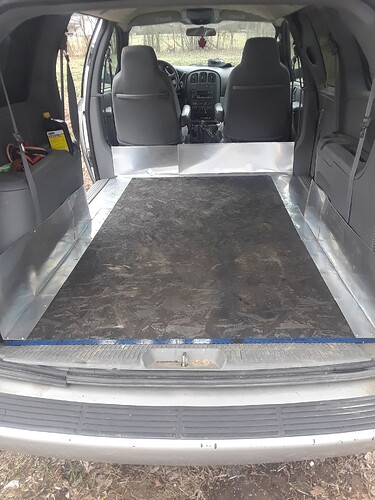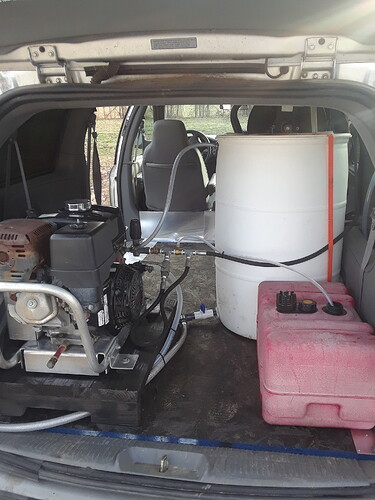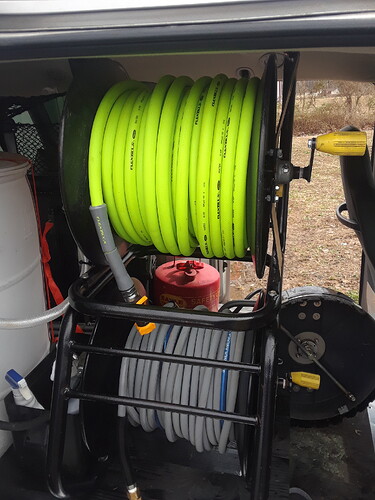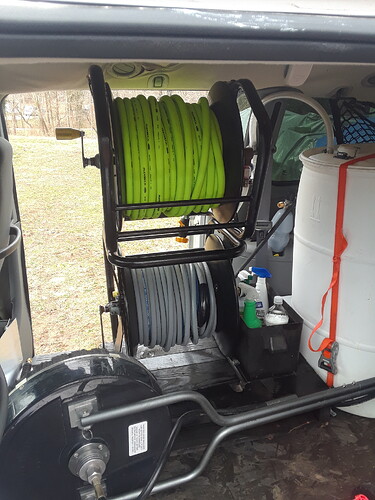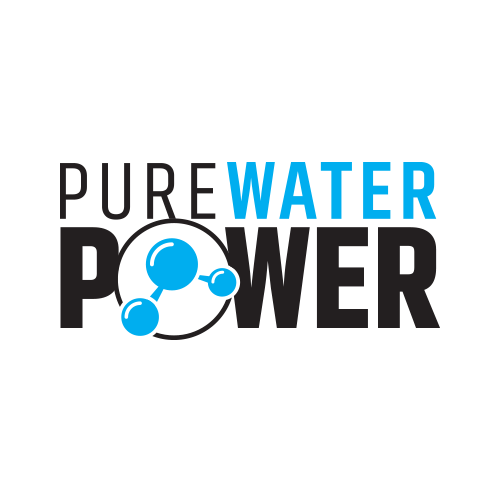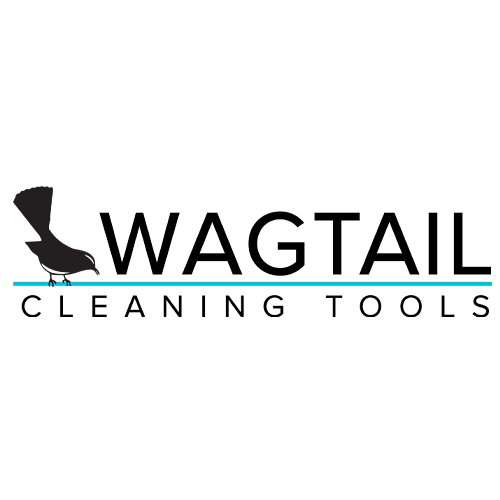Hi everyone I’ve been lurking for a while now researching on many sites and finally reading for work and intro we are a husband and wife run business in western KY I just built my setup it’s a 5 gpm 3000 psi softwash hammerhead surface cleaner 200 ft of flexzilla and 200 ft of nonmaring pressure hose a 55 gal buffer 12 gallon Chem tank downstream with a injection bypass for surface cleaning got the reels used but saved a ton built it all in a minivan I’m going to try to put pictures on hope it works again thanks for all the good reading
Hey man!
Good effort 
Your chemical tank (gas can) is a worry. It’s not fixed down and doesn’t really have the opening for pouring chemicals into.
Spilled chemicals will EAT that vehicle. Fumes will EAT you!
Find a better container would be my advice.
I realise you’re doing what you can with what you have, that’s cool, but maybe consider a clear vinyl sheet between the cab area and the back to cut the fumes out.
…the heat from that exhaust will melt your interior trim too.
Yeah gas and bleach fumes in an enclosed car is no bueno.
Your water tank and engine might be better placed along the centre line.
The engine will be further away from plastic and the water tank will be better positioned for weight distribution.
You might have to have a sealed cap for the water tank and remember to remove it for use and replace it for travel?
Your surface cleaner could lie down the side with your wand etc.
I do worry with all the electrics in there, if there’s a leak on that water tank…that’s a LOT of water for the inside of a vehicle.
Do you have a plan for that?
Yeah I thought about that I have a big funnel to pour it in I’ve also bought a plastic pump that is non corrosive if I ever need to fill it up with a bigger jug planning on installing a sight glass so I can see how full it is its a old gas tank with a vented cap that I’ve rigged a vent tube for travel I have ran it through the floor so the sh fumes isn’t a concern and I plan on leaving the rear door open so the exhaust won’t melt it I made sure the muffler was pointed out. Gonna get a trailer rig someday but kinda like the mobility of this and the advertisement opertunities of a van are awesome
I don’t ever plan on hauling water so distribution wasn’t a issue and the way the door is shaped when u open it up the back of the engine is actually out of the van I’ve washed a few homes already and no problem with heat exchange
You might be surprised at the ambient heat build up from an engine and exhaust running for a number of hours. The sides of my enclosed trailer get hot to touch sometimes.
Seems like you have it all planned out though 
I admire your creativity and what you’re doing.
(I think you have to haul “some” water as you don’t want it to run dry or empty and get air into your pump)
Water leaks were considered also plywood floor with 8 inch flashing cut and molded in a tub like surround with openings at the side doors for drainage in case of leaks I even caulked and sealed all cracks so water leaks are contained and run out side doors only issue would be if a hose burst it would get the cab a roof liner wet but it’s a old work van no worries like I said a means to a end thanks for the comments I have tried to consider most issues
If I have to haul water I have a old junk trailer with a tank on it but it wasn’t big enough for the build I’ll avoid that if at all possible though
…I meant in your buffer tank 
I did too🤔 maybe I’m not understanding the comment
I’m saying that I won’t haul water in my buffer if I ever get a job that I can’t refuse and have to haul water I have a 4 x 5 trailer with a tank on it I can pull behind and avoid hauling water on the minivan springs
He means that you will HAVE to haul SOME water to and fro or that would mean that you are running your buffer tank completely dry or completely draining it between jobs. Either one would cause issues whether that’s starving the pump or trouble priming the pump on the next job.
I, for one, am completely against using vans for this type of work but some folks like it. SH, H20 and the litany of other chemicals we use will absolutely destroy a vehicle body in a matter of months/years. I’ve worked out of vans for other work and it sucked. But, I completely understand that everyone has to start somewhere and I commend you for being brave enough to take the plunge.
Oic I didn’t realize that draining my buffer would also drain my pump of all water but I could solve that issue by simply shutting my ball valve on my supply to my pump and open it back up when the tank is full again
I have a separate ball valve between my drain hose and my pump thanks for the clarity
This is definitely why I like this place the knowledge here is awesome
There ya go. Just be aware that even minor interruptions in the flow can introduce air bubbles that will cavitate the pump manifold. It will take time to do damage but it will happen eventually. Best thing would probably be to open the ball valve after completely filling the buffer to ensure better gravitational effect and then turn the engine over a few times without starting it to make sure it is fully primed before firing it off.
Thanks I will definitely want to protect the investment I have high aspersions I’ve been a underground coal miner for 22 years and I’m ready to be my own boss and see my hard work become more than a pile of coal 
Or just leave water in it  I don’t think it’s good practice to drain your buffer completely between jobs.
I don’t think it’s good practice to drain your buffer completely between jobs.
Theoretically, if you closed the buffer tank ball valve and didn’t close the ball valve on the end of your hose, the water would migrate out of the pump and into the high pressure hose.
If you switch off your machine, then the ball valve at the buffer and drain it - you’d then have to reel your hose in full of water with the ball valve (at the end of the hose) closed or the reeling would drag the water from the pump I believe…
